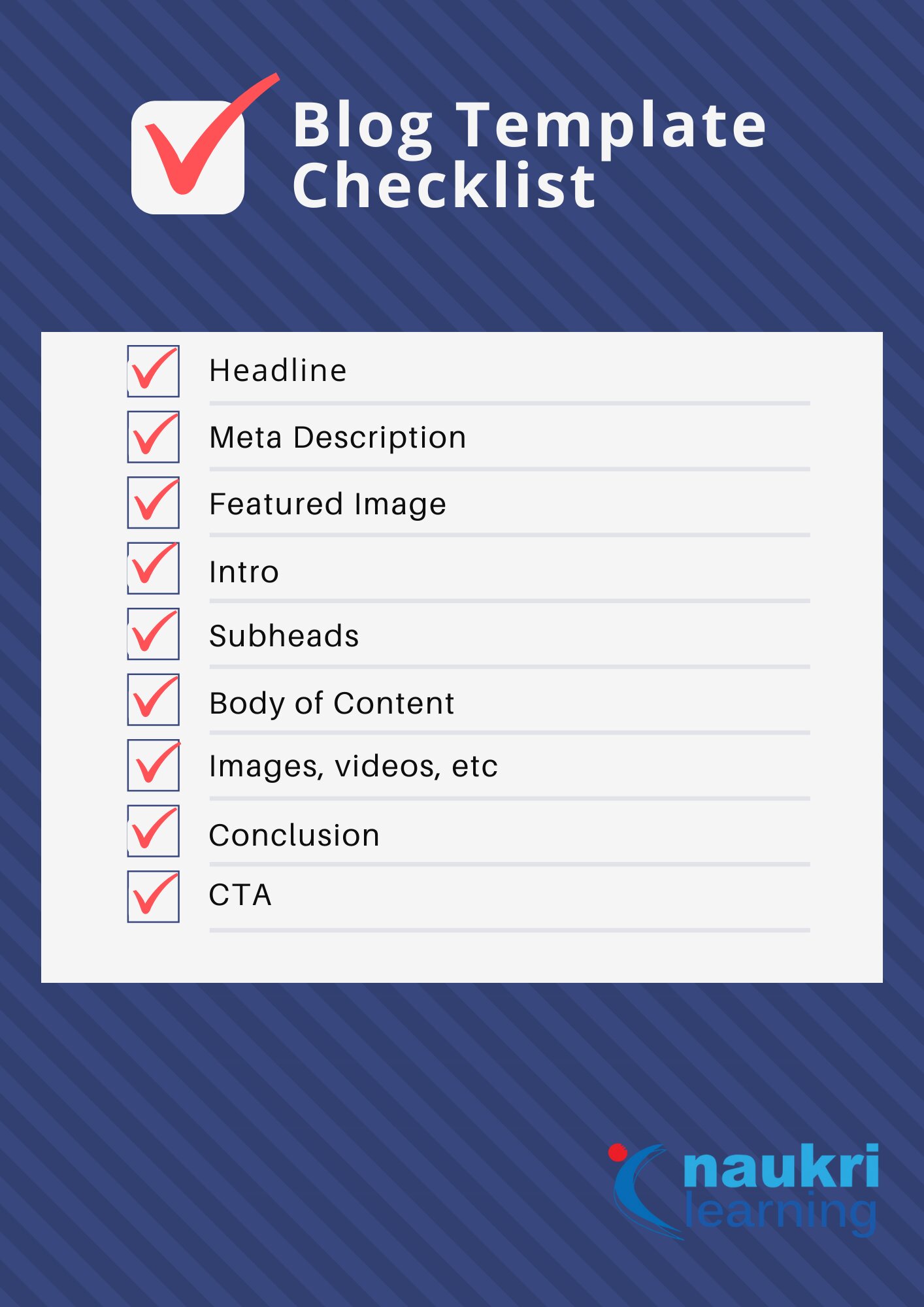How to Write Blogs that Consistently Rank on Google
Unless your reader finds any value in your blog, it will never rank on Google or any search engine. The reason is bloggers worldwide publish 70 million blog posts each month (WordPress). From this number, 57% of marketers benefit from blogging (OptinMonster). Speaking of blogging statistics, one blog post can generate 10 USD to 100 USD according to Lifehacker. Then why shouldn’t you use blogging as a core business model? When you do it right and are consistent with it, your brand visibility on the Google search engine is sure to follow. So, find out how to write blogs that keep ranking well on Google.
Today you’ll know
- Types of Blogs
- Advantages of Blogging For Businesses
- The Perfect Blog Post Template
- Tips on How to Write Blogs For Ranking on Google
All About How to Write Blogs That Rank Every Time on Google
Simply put, a blog post is an online article with an author. It comprises text, images, infographics, and videos. Bloggers use different approaches to cater to their business purpose.
Types of Blogs
Whether you are new to blogging or a writer with a non-marketing background, here are among the most popular types of blogs that engage readers.
- Listicles – These are blogs with titles comprising numbers. For instance, ‘10 Reasons Why’, ‘Top 5’ and so on.
- How-To’s – Among the most popular blog types, they are instructional and aim to solve the pain points of the target audience. This piece that you are reading is a how-to blog.
- Interviews – Such blogs provide authentic information from industry experts. Bloggers usually send questionnaires to them and the blog is presented in a Q&A format.
- Case Studies – If you are writing on a niche topic, engage your readers with well-researched content. Just know that case studies help in conversion every time.
- Guest Blogging – Like interview blogs, guest blog posts builds authority and helps in networking.
Advantages of Blogging For Businesses
Blogging helps businesses and marketers thrive in the crowded digital medium. It is beneficial in every B2B and B2C industry – from travel to education. Some of the benefits are
- Blogs are one of the main drivers of organic traffic. According to Tech Client adding a blog to an existing website can increase traffic by 434%.
- Depending on your audience and the social media channels such as Twitter, Facebook or Linkedin that you use, blogs can increase your brand’s reach.
- Businesses can inform their audiences when they launch a new product or service through blogs.
- Blogs are a great way to stay ahead of the competition. That’s also how businesses grow a bigger network within the niche.
- Once you are consistent with publishing blogs on a regular basis, your business will gain credibility.
Perfect Blog Post Template
Irrespective of the types of blogs, all Google bloggers use this structure.
- Headline – All blogs have a headline. It determines the direction of the blog you are going to write.
- Meta Description – This is a textual description that users see when they find your blog’s URL on search engines. It also tells Google crawlers what the blog is about.
- Featured Image – It appears above the body of the text. This visual element lets the reader identify what the blog topic is about.
- Intro – It is a short para stating what you are writing about. In a way, you are elaborating what the headline is saying.
- Subheadings – After the intro, you will want to direct the reader to subtopics.
- Body of Content – After you draft the subheads, you separate the content body within each subtopic.
- Images, Videos, or Infographics – Throughout the entire body, place these elements to keep the readers engaged.
- Conclusion – This is where you end the blog post.
- Call-to-Action – Encourage the reader to explore your products or services after they read your blog.
Tips on How to Write Blogs For Ranking on Google
Google bloggers always follow the basic SEO guidelines to rank their blogs on the search engine. But to rank at all times you would need an additional set of expertise. Here are some of the essential Google blogging tips.
Identify Your Audience
To create a blog post that works, find out what your reader needs. Your blog should resolve their queries. In this case, these queries are the keywords that users type. Understand their pain points and see how you will meet all their specific keyword-related needs with your blog. This is a standard digital marketing practice. You don’t sell products directly. Instead, make the target audience find out about your product through your well-written blog. That is, write for your audience, not Google.
Analyse the Top 10 Results For Keywords You Choose
The purpose of this analysis is to understand the intent of the search query. After keyword research and brainstorming the topic, analyse how competitors with the same keyword are ranking. Type the query on Google search engine and visit every page that is in the top 10 – on the first search results page. Also, use keyword research tools to explore semantically related keywords more.
Take notes on how the competitors are writing the blog posts. See how they use subheads, tables, call-to-action, the length of the post, and so forth.
Write an Eye-Catching Headline
According to Microsoft Advertising, the average attention span is eight seconds. So if your headline doesn’t draw attention, your audience won’t read it. But do note, don’t write headlines as clickbait. Your headline should be specific and short- about 70 characters with spaces.
One suggestion you can take is installing CoSchedule’s Headline Analyser on Google Chrome. It gives you a score when you insert your headlines. Here you will find a ratio of common, uncommon, emotional and powerful words. Go for a score above 70.
Work on the Intro
After your headline, the most important aspect that keeps the readers reading is the introduction of your blog post. If you do not hook your readers here, they won’t scroll down. Weak and boring introductions are the main reasons for people leaving the page. This increases bounce rate which is detrimental to your ranking.
Follow this model
- Problem – Specify the pain point
- Agitate – Show the results of the tension created
- Resolve – Show how your blog can solve that query
Make Sure You Use Subheadings and Images Logically
Place your body of content under relevant subheads. Make sure you use H1 for the main headline followed by H2 and H3 in the body. Also, do not populate too much content under one subheading. Write in short paragraphs no more than four to five lines. And try placing images or videos after two to three paras.
Focus on Length & Readability
A typical blog post contains 300 words. But Google ranks long-form blog posts with 1000 words and above faster. A study by CoSchedule states that blog posts should be 2500 words to rank faster on Google. Not to say that short blog posts would not rank, they have to meet the needs of the audience and the industry.
Readability is another factor that you need to focus on. There are many free tools available for that as well. If you are not using the Yoast SEO plugin in WordPress, go for free ones such as Hemingway Editor or Grammarly. Try avoiding complex words, remove adverbs, and stay away from long sentences.
Enhance User Experience With Technical SEO
Start with compressing heavy images and using the primary keyword in the headline, URL and meta description.
Tell A Story, In-Depth
Google prefers well-researched and structured content. And your blog will only rank on Google when it has more information than your competitors. While it has to be information-rich, it also should be captivating enough for the reader. This is also how you will gain authority as a blog author for a particular niche.
Best-suited Digital Marketing courses for you
Learn Digital Marketing with these high-rated online courses
Parting Thoughts
Here are the essential tips on how to write blogs that rank consistently on Google. Hopefully, you will start using these tips and get on the first page in no time. Just keep in mind, always write for your audience.
Recently completed any professional course/certification from the market? Tell us what you liked or disliked in the course for more curated content.
Click here to submit its review with Shiksha Online.

Aquib is a seasoned wordsmith, having penned countless blogs for Indian and international brands. These days, he's all about digital marketing and core management subjects - not to mention his unwavering commitment ... Read Full Bio






Comments
(3)
A
8 months ago
Report
Reply to Aditya shukla
a
10 months ago
Report
Reply to anime movemnt
N
a year ago
Report
Reply to Nikhil ravan